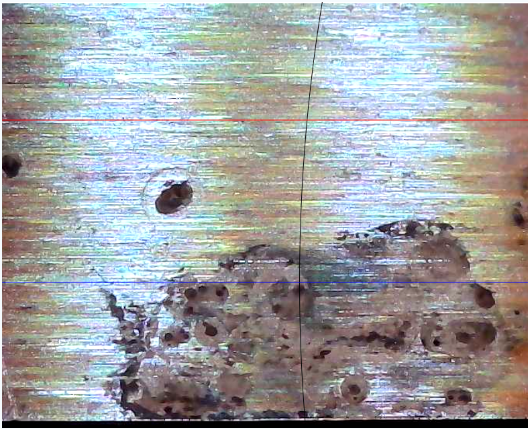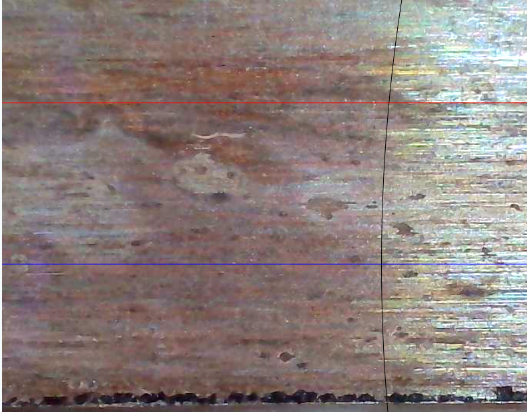You may have heard of the term ‘deep rust’ for ice skate blades, this page will explain what it is, what causes it and what can be done about it.
Most ice skate blades are made of steel, which if exposed to moisture and water for an extensive period of time will rust. A bit like when you eat acidic foods, this damages the very surface of the steel, but if left unchecked the rust will grow into the steel, much like how a tooth cavity is formed.
When rust starts to penetrate the steel it becomes increasingly difficult to dry the skate in that area, because rather than having a solid piece of metal, you have a metal-oxide material that houses holes, some microscopic and some larger, that hold water in. If you manage to remove all of the rust, you still have the possibility of microscopic holes left on the blade, allowing water to get trapped.
Deep rust is the term used when the rust penetrates deep enough that it cannot be easily ground out of the steel through the sharpening process. Depending on the severity of the situation there are really only three choices at this point:

Extensive damage caused by deep rust – this would simply look dull to the naked eye, but you can see how deep the holes penetrate the blades….

Edge damage caused by deep rust on the side of the skate. This is very difficult for a skate technician to remove
What causes deep rust? Simply: leaving skate blades wet after skating. There are a few things you need to know:
But why is this? When you come off the ice rink your blades will be cold – somewhere towards the freezing point of water. When you come off the ice you absolutely must clear as much water off the blade as possible. But most people then leave the ice rink into warmer, more humid air. The water held in the air will condense on the cold blades, making them wet again.
If you have guards still on the skate, the guard will then inhibit the water’s ability to evaporate again, effectively holding the water against the blade.
Prolonged exposure to the water will then start the rusting process, and as soon as small rust holes are formed in the steel, these will hold more water against the blade, increasing the rusting speed.
Prevention is better than cure, and thankfully it’s quite easy to prevent deep rust:
Resolving deep rust issues is difficult - once the damage is done, it's irreversible.
If the damage isn’t too bad it might be best just to ensure that you keep the skates as dry as possible when not on the ice – wipe them down, take them home, wipe them down, warm them up, wipe them down, then store them in a dry place. Sadly doing this may not get all the water trapped in the holes caused by the rust out, so keep an eye on the blades to ensure the rust damage isn’t spreading.
If the damage is more extensive you may have to get the skates ground down to remove most of the holes; obviously doing this will cause shortening of the life of the blades. Your skate technician will typically err on the side of caution, not removing more than was necessary and contacting you if the damage is so bad that more should be taken off.
If the rust damage is too bad, your skate technician might suggest you buy new blades for your skates. Take that advice! If there is a lot of rust on the sides of the blades, the technician will never be able to give you a really clean skating edge – it’d be like always skating on a notched bread knife.
I hope you’ve found this guide helpful. Please feel free to get in touch with us if you have any questions regarding whether some skates/blades can be salvaged, or to ask more generally about rust damage.